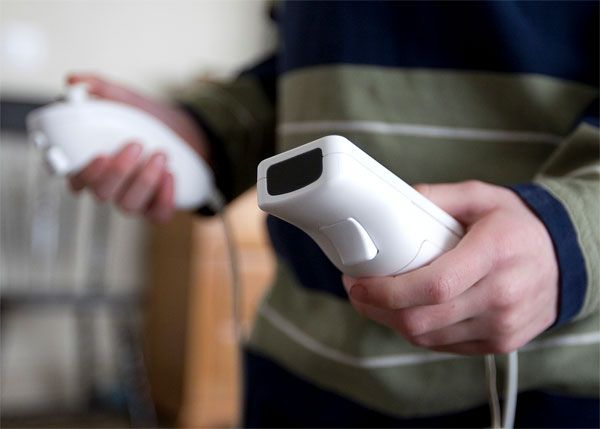Game On: Video Games Give Kids a Solid Workout

Interactive video games, such as Dance Dance Revolution and Wii Boxing, provide kids with moderate to vigorous exercise, according to a new study.
Some of these games increased kids' energy expenditure by four to eight times what it was at rest. And most of the games required kids to expend more energy than they would use walking.
The results suggest interactive video games might be one strategy to help reduce the amount of time children spend sitting down — a behavior strongly linked to obesity, the researchers said. And they might provide kids with a form of exercise they actually enjoy.
"These [video games] can be used as a tool to help children increase their physical activity," said study researcher Bruce W. Bailey of Brigham Young University. "I don’t think it's a cure for childhood obesity. I don’t think it should replace necessarily all activity for children. But it can be used as a tool," he told MyHelathNewsDaily.
The results were published online today (March 7) in the journal Archives of Pediatrics & Adolescent Medicine.
Playing video games for science
Thirty-nine children, ages 9 to 13, took part in the study, carried out at a fitness center in Boston. The study evaluated six different games systems (games listed in parenthesis): Dance Dance Revolution, LightSpace (Bug Invasion), Nintendo Wii (Boxing), Cybex Trazer (Goalie Wars), Sportwall, and Xavix (J-Mat). Three of these games, LightSpace, Cybex Trazer and Sportwall, are commercial games sold to fitness centers; the other three are games consumers can play in their home. The children spend two weeks familiarizing themselves with the games.
Sign up for the Live Science daily newsletter now
Get the world’s most fascinating discoveries delivered straight to your inbox.
The researchers then measured how much energy the kids used while playing each game for 10 minutes. They also looked at how much energy the children used while walking 3 miles per hour.
Sportswall and Xavix used up the most energy — about the same amount the children would use while jogging, Bailey said. These games were followed by LightSpace, Cybex Trazer and Dance Dance Revolution. Wii Boxing was the only game that required less energy than walking.
The researchers didn't measure whether interactive video games help kids lose weight — more research needs to be done to determine this. They also can't say whether kids would burn as many calories playing these games in the real world as they did under the conditions of this study.
And spending too much time playing video games could prevent kids from engaging in other types of activities that would also help them keep fit, James F. Sallis, of San Diego State University, wrote in an editorial accompanying the study.
A strategy for fitness
Children who were at risk of becoming overweight or obese, as indicated by their body mass indices (BMIs), enjoyed the games the most. Upon closer examination, the researchers found this result was mostly due to high enjoyment ratings for the game Sportwall. Children with higher BMIs might have enjoyed certain aspects of the game, such as the fact that it was played in teams and required intermittent, rather than continuous, activity.
This is hopeful because "if you have somebody who doesn’t enjoy running or doesn’t enjoy basketball … you can use this as a means of helping them be more physically active," Bailey said.
Pass it on: Interactive video games can be a vigorous and enjoyable form of exercise for kids.
Follow MyHealthNewsDaily staff writer Rachael Rettner on Twitter @RachaelRettner.

Rachael is a Live Science contributor, and was a former channel editor and senior writer for Live Science between 2010 and 2022. She has a master's degree in journalism from New York University's Science, Health and Environmental Reporting Program. She also holds a B.S. in molecular biology and an M.S. in biology from the University of California, San Diego. Her work has appeared in Scienceline, The Washington Post and Scientific American.











